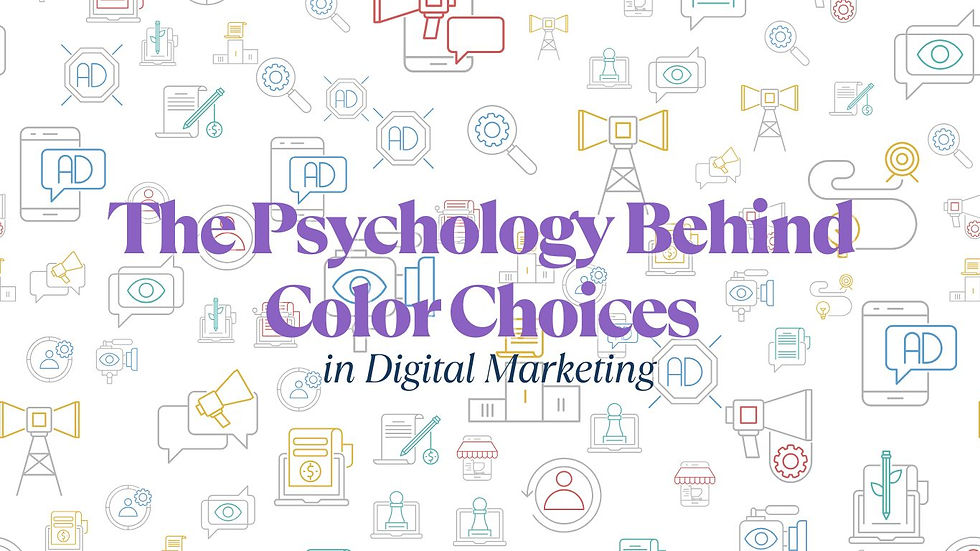The Psychology Behind Color Choices in Digital Marketing
- Maddy Creatives
- Apr 1
- 3 min read
Color is more than decoration—it’s a subtle but powerful form of communication. In digital marketing, the colors you use influence how people perceive your brand, how they feel when they interact with your content, and ultimately whether they take action. Understanding color psychology isn’t just for artists. It’s a strategic tool that smart marketers and designers use every day.
The Emotional Power of Color
Colors trigger instinctive reactions. Blue tends to signal trust and calm, which is why banks and tech companies often use it. Red sparks urgency and energy, making it effective in calls-to-action. Green suggests growth, health, or sustainability. Yellow grabs attention and communicates cheerfulness, while black conveys luxury and sophistication.
These associations aren’t universal across cultures, but in most Western contexts, they hold strong. Choosing colors that align with your brand personality helps people quickly “get” who you are.
Making the Right First Impression
Visitors form an opinion about your site within seconds. Often, before they read a word, they’re reacting to the colors and layout. The wrong palette can create confusion or drive people away, while the right one builds trust and makes them want to explore more.
Good color choices make your brand feel professional and intentional. They should support your messaging, not distract from it. A wellness brand might lean into soothing greens and soft neutrals, while an entertainment brand could thrive with bold purples or neon tones.
Guiding Attention and Behavior
Color plays a major role in guiding the user journey. Bright colors and high contrast draw the eye—perfect for buttons, links, and important headlines. A strategically placed red or orange button can significantly increase conversions because it naturally stands out.
But it’s not just about picking bright colors. The contrast between elements matters. A call-to-action should visually “pop” compared to its background and surroundings. The goal is clarity, not chaos.
Consistency Builds Recognition
Once you’ve chosen a color palette that reflects your brand values and goals, stick with it. Using consistent colors across your website, emails, ads, and social media strengthens brand recognition. Repetition helps people remember you.
This doesn’t mean everything should look the same. But your core color scheme should be visible across all touchpoints, reinforcing a sense of cohesion.
Cultural and Accessibility Considerations
Color meanings aren’t the same everywhere. In some cultures, white symbolizes purity. In others, it’s associated with mourning. If your audience is international, it’s worth researching how your color choices may be interpreted in different regions.
You should also consider accessibility. Relying only on color to convey meaning (like using red for errors and green for success) can be a problem for people with color blindness. Use icons, text, and shapes alongside color to ensure clarity for everyone.
Testing and Adapting
Theories are helpful, but data is better. Run A/B tests to see how different color choices perform. You might find that a blue button works best for one product, while orange works better for another. What matters is how your actual audience responds.
Track metrics like bounce rate, conversion rate, and time on site after making design changes. Be open to evolving your palette as your brand grows or shifts direction.
Final Thoughts
Color is silent but persuasive. It shapes how people feel, what they notice, and how they behave. When used thoughtfully, it strengthens your message and enhances user experience. In digital marketing, color isn’t just an aesthetic choice—it’s a strategic one.
Don’t leave it to chance. Pick your palette with purpose, test its impact, and use color to communicate clearly with your audience.




Comments